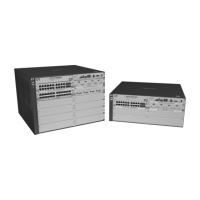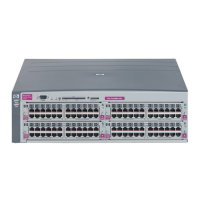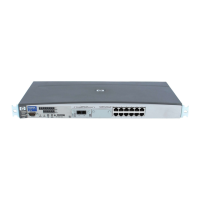Key Management System
Configuring Key Chain Management
The “Procurve1” key chain entry is a time-independent key and will not expire.
“Procurve2” uses time-dependent keys, which result in this data:
Expired = 1 Key 1 has expired because its lifetime ended at 8:10 on 01/18/03, the
previous day.
Active = 2 Key 2 and 3 are both active for 10 minutes from 8:00 to 8:10 on 1/19/03.
Keys 4 and 5 are either not yet active or expired. The total number of keys is 5.
13-8

